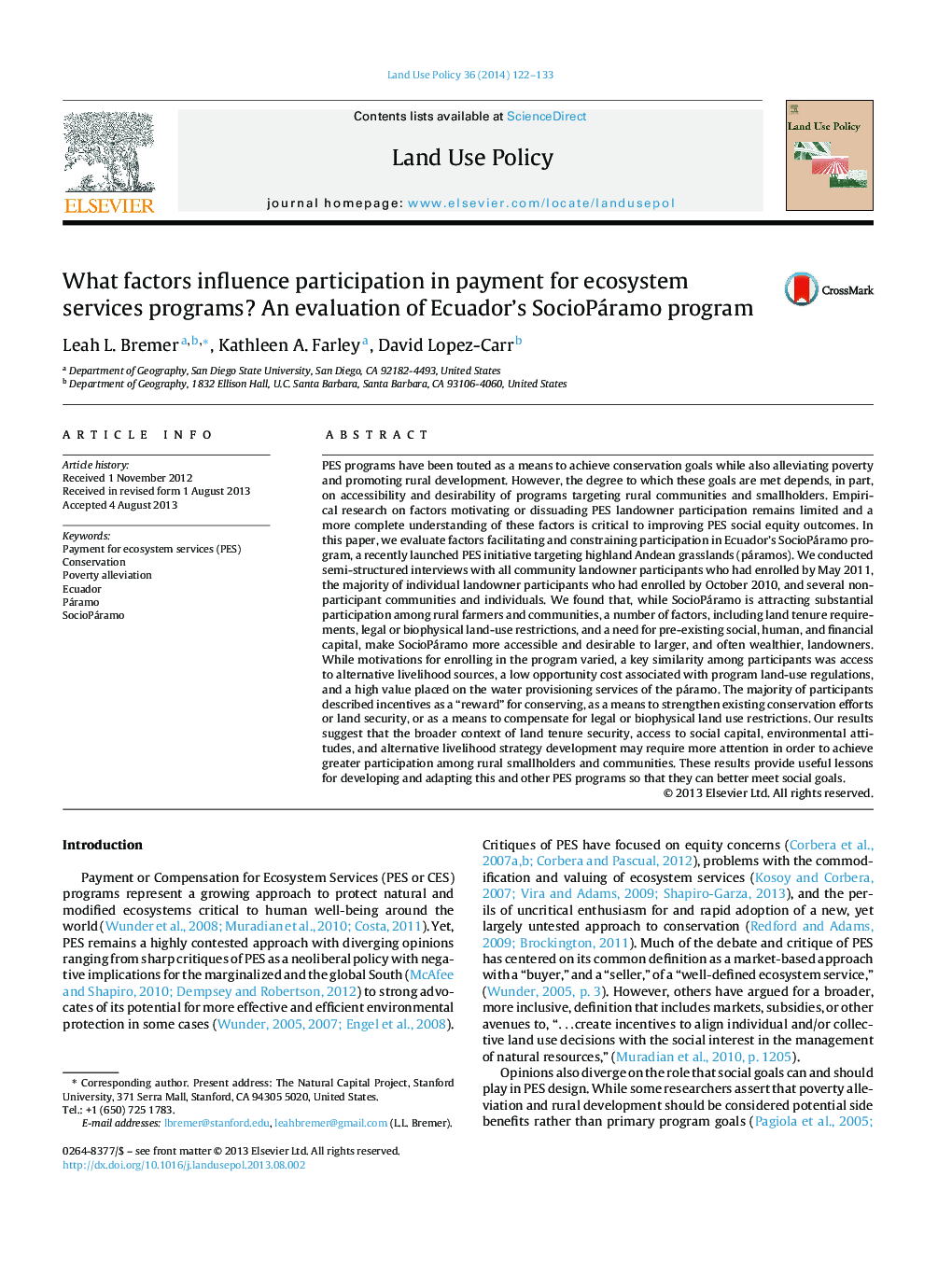| کد مقاله | کد نشریه | سال انتشار | مقاله انگلیسی | نسخه تمام متن |
|---|---|---|---|---|
| 6548917 | 160113 | 2014 | 12 صفحه PDF | دانلود رایگان |
عنوان انگلیسی مقاله ISI
What factors influence participation in payment for ecosystem services programs? An evaluation of Ecuador's SocioPáramo program
دانلود مقاله + سفارش ترجمه
دانلود مقاله ISI انگلیسی
رایگان برای ایرانیان
کلمات کلیدی
موضوعات مرتبط
علوم زیستی و بیوفناوری
علوم کشاورزی و بیولوژیک
جنگلداری
پیش نمایش صفحه اول مقاله

چکیده انگلیسی
PES programs have been touted as a means to achieve conservation goals while also alleviating poverty and promoting rural development. However, the degree to which these goals are met depends, in part, on accessibility and desirability of programs targeting rural communities and smallholders. Empirical research on factors motivating or dissuading PES landowner participation remains limited and a more complete understanding of these factors is critical to improving PES social equity outcomes. In this paper, we evaluate factors facilitating and constraining participation in Ecuador's SocioPáramo program, a recently launched PES initiative targeting highland Andean grasslands (páramos). We conducted semi-structured interviews with all community landowner participants who had enrolled by May 2011, the majority of individual landowner participants who had enrolled by October 2010, and several non-participant communities and individuals. We found that, while SocioPáramo is attracting substantial participation among rural farmers and communities, a number of factors, including land tenure requirements, legal or biophysical land-use restrictions, and a need for pre-existing social, human, and financial capital, make SocioPáramo more accessible and desirable to larger, and often wealthier, landowners. While motivations for enrolling in the program varied, a key similarity among participants was access to alternative livelihood sources, a low opportunity cost associated with program land-use regulations, and a high value placed on the water provisioning services of the páramo. The majority of participants described incentives as a “reward” for conserving, as a means to strengthen existing conservation efforts or land security, or as a means to compensate for legal or biophysical land use restrictions. Our results suggest that the broader context of land tenure security, access to social capital, environmental attitudes, and alternative livelihood strategy development may require more attention in order to achieve greater participation among rural smallholders and communities. These results provide useful lessons for developing and adapting this and other PES programs so that they can better meet social goals.
ناشر
Database: Elsevier - ScienceDirect (ساینس دایرکت)
Journal: Land Use Policy - Volume 36, January 2014, Pages 122-133
Journal: Land Use Policy - Volume 36, January 2014, Pages 122-133
نویسندگان
Leah L. Bremer, Kathleen A. Farley, David Lopez-Carr,